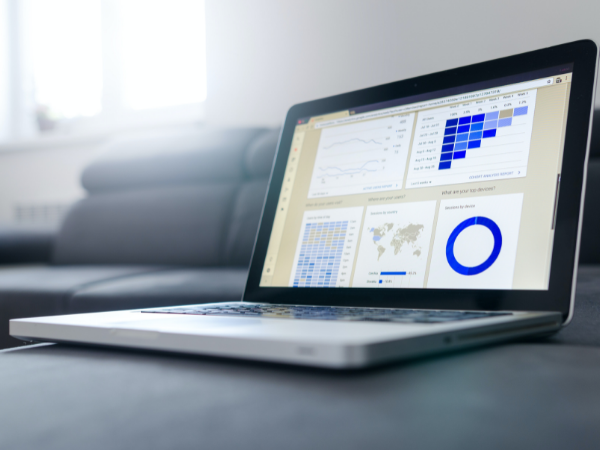Why research methods can help with the ‘new normal’
You may have used research methods in school, but you probably have left them there. Yet, you may want to learn them again for this new normal. These old techniques may prove beneficial in understanding the changes brought by the pandemic.
We will have to talk about the types of research methods before we make use of them. This means going through their purposes, strengths, and weaknesses. More importantly, we’ll go deeper into why research methods are important even if you’re not a researcher.
Our world is undergoing numerous major changes because of the coronavirus. If you want to make sense of it all, you’ll need to do it yourself. Fortunately, research methods can help you gather information about these changes and take advantage of them.
Types of research methods
- Quantitative
- Qualitative
- Basic
- Applied
#1. Quantitative
As the name suggests, this deals with quantitative data. This method uses numbers to measure certain phenomena or topics. It could use the other research methods on this list.
For example, your quantitative research may start with a survey. Then, you could make sense of the data you’ve collected with conclusive research. You’ll see this is common for all methods.
It usually involves conducting surveys on people. Then, you count the responses and analyze them. As we said, we will explore the pros and cons of each method. Let’s start with this one:
Upsides of the Quantitative Method
- Fast data gathering – You get more info quickly from using surveys and other methods. This allows you to study the collected data quickly.
- Random sampling – When gathering info, you often get it from random people in a certain area. This may reduce bias in data.
- Reliable info – In other words, you could repeat your findings and get similar results. We say “similar” because other factors could affect your retrial. This is expected for all research methods, though.
- Generalized findings – The results of your research won’t just apply to one place. In other words, you could do it in a different location and get similar results.
- Larger population – This just means you may include more people in your research. Still, you should be wary of your sample size.
Downsides of the Quantitative Method
- No follow-up – When you ask people survey questions, you usually can’t ask them further. If you asked them in a regular setting, you might not meet those people again. On the other hand, you’ll have a hard time scheduling another survey timeslot.
- Limited demographic – The folks you surveyed may have traits that other people may not have. This could affect their answers and your analysis.
- Answers may not be true – People can always lie, especially in surveys. This is why you should be careful in the questions you’ll ask.
- It’s expensive – You may spend upwards of $100,000 when using the quantitative research method.
#2. Qualitative
Here’s the opposite of the quantitative method. That one often involves questions that people can answer with a “yes” or “no.” The qualitative method uses open-ended questions instead.
This lets your subjects give more details. Let’s say you need to see how they’re coping with the COVID-19 pandemic. If you just ask if they’re fine as it happens, they may answer “yes” or “no.”
That doesn’t tell you much about their condition. In qualitative research, you may ask, “How have you been feeling about the pandemic?” You’ll get a clearer picture of their current condition.
Of course, it isn’t all good. It has shortcomings, just like all the methods on this list. Let’s take a closer look at each of the qualitative method’s pros and cons:
Upsides of the Qualitative Method
- Adaptability – You could adjust your method based on new data. This also helps if you’re not getting the expected results.
- Long-term prediction – The results could help you predict future behaviors. However, you’ll have to consider the characteristics of the people you surveyed.
- Based on human experiences – People think carefully about their survey answers. The qualitative method may get into the heart of what people feel. This could offer more insight into them, meaning more data for you.
Downsides of the Qualitative Method
- Subjective data – The problem with open-ended questions is that it’s biased. The respondent will answer the questions using what they know and remember. These aren’t always reliable, so you have to be careful when checking their answers.
- Takes more time – Checking all their responses will take more time than when using quantitative research. After all, you’ll have to verify all their claims based on other sources.
- Needs specific expertise – You will have to possess skills or knowledge that are relevant to your topic. If you don’t, you’ll have a harder time gathering and studying qualitative info.
Read More: How Might Life After COVID Look Like?
#3. Basic
This is also called the fundamental research method. It has a simpler goal than the other methods too. It just wants to get answers to certain questions.
In other words, it only deals with data gathering. It doesn’t have to apply the findings in any meaningful way. In turn, it widens what is known about a specific subject.
However, this is also its greatest flaw. It’s like reading random trivia from the internet. For example, you learned that the plastic tips of shoelaces are called aglets.
This lets you learn something new about shoes. Will knowing this word somehow change how you use your sneakers? You most likely will not. The basic method is still useful, though.
As you learn more about a subject, you get to find new aspects to explore. These could become useful to certain subjects. This is why people still use the basic research method.
#4. Applied
As the name suggests, people use this type of research method on other subjects. The study should help solve a certain problem. In other words, it’s the opposite of the basic method.
You won’t use this just to know about a certain topic. That’s why research involving this method will be more structured. Does this mean the applied method is better?
No, the applied research method has some issues too. You’re using it to solve a problem. For starters, this often has a deadline. That means you have a limited period to find the solution.
Moreover, it only works for a certain topic. Data collection will be focused on it. This means ignoring data that isn’t related to your problem. Those could have been valuable, though!
What are the different kinds of data?
You could also divide the info you get into different types. These are based on the relationships among these bits of information. Here’s a quick look:
- Independent variable – These are factors that aren’t affected by others you’re trying to measure. Let’s take boiling water as an example. The fire in your stove may serve as the independent variable.
- Dependent variable – As the name suggests, it changes depending on other factors. Using our previous example, water is the dependent factor. It becomes hot based on how much fire your stove makes.
- Primary data – This is information you got by yourself. If you conducted a survey, you’re getting primary info.
- Secondary data – This is information gathered by others. You may perform data analysis on someone else’s survey or paper.
How can research methods help me?
You might think they’re only useful for school. Yet, you perform research without knowing it. Whenever you want to know more about anything, research starts.
Sure, a quick Google search doesn’t seem much. Still, it drives our desire to know. Research methods are just ways to get better answers quicker.
Quantitatively and qualitatively gathering data will help you get a clearer picture of a topic. It doesn’t matter if you’re from the United States or any other part of the world.
Everyone can use these research methods. That’s a good thing too. We need them more than ever. They can help us make sense of the new normal brought by COVID.
Many people don’t know what to do with the changes it brings. This doesn’t mean you should just stand and watch. Use the internet to learn more about what’s going on for free.
Use these methods to get the most out of online resources. They’ll help you sort through all the information. Then, decide if you’re using them to solve a problem or just to learn new things.
As a result, you’ll have a clear direction and goal for your online searches. What’s more, they can help you pick apart real from fake news. These are truly important to figuring out the new normal!
Final thoughts
There are 10 types of research methods, but we didn’t talk about all of them. The others are more suited to research work than day-to-day activities.
Still, you could learn more about those online. They could prove useful, especially for the trending work-from-home jobs. It’s one of the important skills you may need nowadays.
What’s more, you should always want to know more. You could start by reading other articles from Inquirer USA. These cover a wide variety of topics you may like!
Related Articles
Learn more about research methods
What is a research method in research?
It’s the way you will gather information on a certain topic or issue. This will determine how reliable and useful your data will be. Otherwise, you may spend so much time and resources on information that you can’t use. This is why it’s important to choose a specific research method wisely.
What are the 10 types of research?
- Quantitative
- Qualitative
- Basic
- Applied
- Descriptive
- Analytical
- Exploratory
- Conclusive
- Surveys
- Case studies
Some of these are more suited for actual researchers. Yet, others may prove to be useful in real-life situations. These include the 1st four entries in this list. You may learn about those by reading the article above.
How do you select a research method?
This will depend on numerous factors, such as your research design and problem. No research method will suit all types of projects. That’s why you should match the ones that fit your current research plans. For example, quantitative research may be enough if you’re just counting how many people got COVID in your area.







